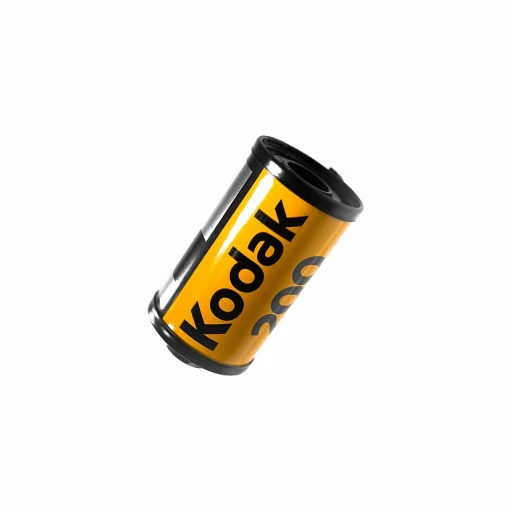
A Glimpse into the Exhilarating World of Luxury Electric Supercars
Entering the Electrified Era of Automotive Luxury
Imagine a future where the thrum of a combustion engine gives way to a near-silent yet potent crescendo of electric power. This is the reality in the exclusive enclave of luxury electric supercars. These vehicular masterpieces merge groundbreaking performance with an inherent commitment to sustainability, defining the pinnacle of high-tech opulence. With 0 to 60 mph acceleration times that challenge the laws of physics, electric supercars tantalize the senses and announce the arrival of future-forward mobility to the world's elite.
Effortlessly Commanding the Spotlight
In the rarefied atmosphere of high-end transport, electric supercars are not just about blistering speed. They embody an evolution in the very ethos of luxury, where sophistication and eco-consciousness are inextricable. Each model, from the lightning-fast Tesla Roadster with its sub-2-second claim to the Rimac C_Two's intelligent design, illustrates a seismic shift in automotive philosophy. These machines are not merely vehicles but are a testament to human ingenuity and an unwavering pursuit of perfection. According to the latest figures from the luxury automotive industry, interest in electric supercars has surged, with manufacturers seeing an unprecedented uptick in demand.
Revolutionary Performance Meets Exclusivity
The electric supercar landscape is a harmonious blend of advanced engineering and bespoke luxury. Pioneers such as the Lotus Evija and the Pininfarina Battista have set the benchmark for what is technologically feasible, while also showcasing peerless craftsmanship. The allure of electric supercars is underscored by their limited production numbers, often making them even more coveted than their ICE counterparts. A testament to their desirability, industry statistics indicate a swell in pre-orders for these rarefied electrified models, with customers eager to be part of an exclusive club that promises more than just a statement of wealth—it's an alignment with a futuristic vision.
Beneath the Hood: The Pioneering Technology Electrifying High-End Rides
Pioneering Tech Drives the Electric Supercar Evolution
At the core of every electric supercar lies groundbreaking technology, a ballet of innovation and engineering prowess captivating luxury tech enthusiasts worldwide. This market is projected to proliferate, with Statista reporting a compound annual growth rate (CAGR) of luxury electric vehicles (EVs) at 22.8% from 2020 to 2027. Key industry players are blending performance with sustainability, initiating a paradigm shift in high-end mobility. For instance, the Tesla Roadster's Plaid powertrain exemplifies the zenith of EV performance. With 0 to 60 mph in 1.9 seconds, Tesla's pioneering electric motors have set a benchmark for competitors.
Revolutionizing Speed with Battery Innovations
Battery technology is a critical component powering the luxury electric supercar revolution. The latest developments in solid-state batteries are paving the path for faster charging and longer ranges. Companies like Solid Power are producing batteries that are lighter, more energy-dense, and offer enhanced safety features compared to traditional lithium-ion batteries. As per BloombergNEF, the falling cost of batteries, approximately 89% decrease since 2010, is instrumental in accelerating the adoption of electric supercars amongst affluent consumers.
AI and Automation: Elevating the Driving Experience
Artificial intelligence (AI) and advanced driver-assistance systems (ADAS) are becoming standard in luxury electric supercars, providing an unprecedented level of personalization and convenience. Tech giants such as NVIDIA are at the vanguard, offering AI platforms that transform vehicles into autonomous, connected entities. In 2021, AI in the automotive industry witnessed a surge in investment by over 20%, per a report from PwC. This cutting-edge technology ensures that electric supercars not only offer blistering speed but are also a bastion of sophisticated, intelligent features such as predictive maintenance and real-time traffic adaptation.
Charging Forward: The Race for Excessive Range
The lexicon of luxury electric supercar drivers revolves not just around speed, but also the range. Innovations in charging infrastructure and battery capacity are eliminating the so-called 'range anxiety'. With companies like Rimac pushing boundaries, their hypercars boast ranges exceeding 340 miles on a single charge. Proliferation of high-speed charging networks is complementing this, with IEA reporting over 860,000 public charging points globally, a figure that continues to climb steadily, ensuring the exotic car experience is untethered and ever more exhilarating.
Materials and Manufacturing: Crafting the Future
Unveiling the wizardry beneath the hood, the materials used in electric supercars are equally revolutionary. Carbon fiber, cherished for its strength-to-weight ratio, is increasingly being used, making these automobiles lighter and faster. Data from MarketsandMarkets highlights the demand for carbon fiber in the automotive sector is expected to hit $3.8 billion by 2025, illustrating the significance of materials innovation in shaping the future of luxury mobility. Coupled with advances in 3D printing and sustainable manufacturing practices, luxury electric supercars are not only at the apex of desirability but also the epitome of responsible performance.
The Aesthetics of Speed: Design Trends in Electric Supercar Manufacturing
Embracing the Future: The Craftsmanship Behind Electric Supercar Designs
High-end electric supercars bring more to the table than just breathtaking speed; they're a manifestation of luxury and innovation merged into one. According to recent reports, the market for luxury electric vehicles (EVs) is expected to grow significantly in the next decade, with a CAGR of over 40%. With this heightened interest, manufacturers are focusing intensely on the aesthetics that speak the language of opulence. Every curve, line, and feature of electric supercars is designed to deliver an aura of exclusivity.
Take, for example, the groundbreaking Tesla Roadster, with its sleek aesthetic that promises an unparalleled fusion of technology and design. Meanwhile, the Lucid Air sets the bar higher with its meticulous attention to aerodynamics, reflected in its elegant, fluid form.
Innovative Materials and Sustainability: The Luxe Equation
When it comes to the realm of high-end electric supercars, it's not just about looks; sustainability is the new status symbol. Prestige buyers now demand sustainability alongside luxury, which is mirrored in the use of eco-friendly materials. According to trend analyses, carbon fiber and recycled materials are progressively replacing traditional materials, signaling a shift towards sustainable opulence.
- Carbon Fiber: Used for its high strength-to-weight ratio, providing both performance efficiency and a modern look.
- Recycled Materials: High-quality recycled fabrics are becoming a staple in luxury interiors, proving that eco-consciousness and luxury can coalesce.
Brands like Rimac Automobili are not just delivering performance but also promoting a green philosophy. The Rimac Concept One, with its environmental-friendly ethos, integrates sustainability into its core values, much to the approval of the luxury market.
Personalization and Technology: The Hallmarks of Modern Luxury
In the world of luxury, personalization is key. Studies show that a majority of luxury buyers prioritize customization options as a decisive factor in their purchase. In response, electric supercar manufacturers are offering bespoke configurations, allowing customers to tailor their vehicles to their unique tastes. The Lamborghini Terzo Millennio, for instance, takes personalization to new levels with its futuristic design and customizable features.
Adding to the allure of electric supercars is the integration of advanced tech. From augmented reality dashboards to AI-assisted driving, these vehicles are equipped with the latest tech innovations, enhancing the driving experience while providing a tantalizing glimpse into the future of automotive luxury.
"The beauty of electric supercars lies not just in their visual appeal or eco-consciousness, but also in their ability to seamlessly integrate state-of-the-art technology," notes an industry expert. This tech-forward approach not only paves the way for a more intuitive driving experience but also asserts the status of the owner within the domain of high-end mobility.
Economic Exclusivity: The Influence on Design and Status
Owning an electric supercar goes beyond having a means of transportation; it's a statement of economic prowess and forward-thinking perspective. With price tags often soaring into the hundreds of thousands, these vehicles stand as emblems of both monetary and social elite status. As market analysis indicates, there is a correlation between the exclusivity of the vehicle and its design complexity. Top-tier manufacturers such as Porsche with their Taycan or the Aston Martin with the Rapide E spare no expense in crafting unique designs that set owners apart from the crowd.
This commitment to exclusivity not only shapes the vehicle's design but also influences societal viewpoints on wealth and environmental responsibility. The owners of these sublime machines are often perceived as both patrons of the arts and champions of sustainability, bridging the gap between luxury indulgence and environmental stewardship. It's a balance that today's top echelons of society are increasingly eager to achieve.
The Price of Prestige: Analyzing the Economic and Social Impact of Owning an Electric Supercar
The Economic Ripple Effect of Electric Supercars
The electrifying allure of luxury electric supercars extends beyond the immediate thrill of their speed; they serve as benchmarks for economic affluence and innovation. Industry experts estimate a significant increase in the value of the global luxury car market, projecting it to command a colossal market size by 2027, with electric supercars driving a substantial share. This economic prosperity is catalyzed by the massive investments in electrification technology, which is not only reshaping consumer demand but also creating high-wage employment opportunities in cutting-edge engineering and design roles.
Understanding the Cost Dynamics of Electric Supercar Ownership
- Initial Investment: The price tag of electric supercars remains a symbol of status, with introductory models often starting in the upper six-figure range.
- Long-Term Savings: When comparing lifetime costs, including maintenance and energy consumption to traditional supercars, electric variants can offer significant cost savings. According to a recent report, electric vehicles could save owners up to $10,000 over the life of the car due to lower fuel and maintenance costs.
- Insurance and Tax Incentives: Many governments provide substantial tax credits and rebates for electric vehicle owners, though these can vary widely by region and may be subject to change.
Examining the Societal Prestige of Electric Supercars
Ownership of an electric supercar is not merely a financial transaction; it is a culturally esteemed privilege. In modern high society, owning such a vehicle is akin to wearing a masterfully crafted timepiece; it conveys a message of exclusivity, taste, and a commitment to embracing sustainable, state-of-the-art technology. These vehicles are not just modes of transport but, as eloquently articulated by leading automotive designers, they are "moving sculptures" that reflect the pinnacle of personal success and forward-thinking environmental stewardship.
Celebrating Luxury and Sustainability: The New Social Currency
In the tapestry of electric supercar ownership, environmental responsibility has become interwoven with luxury. This blurring line is supported by statistics revealing a growing consumer segment that equates sustainability with luxury, influencing purchasing behavior. A 2021 consumer survey found that 73% of affluent buyers consider sustainability features an essential factor in their lifestyle choices. This signals a paradigm shift wherein the traditional hallmarks of opulence are now being redefined by how innovatively and responsibly they leverage technological advancements for a greener future.












